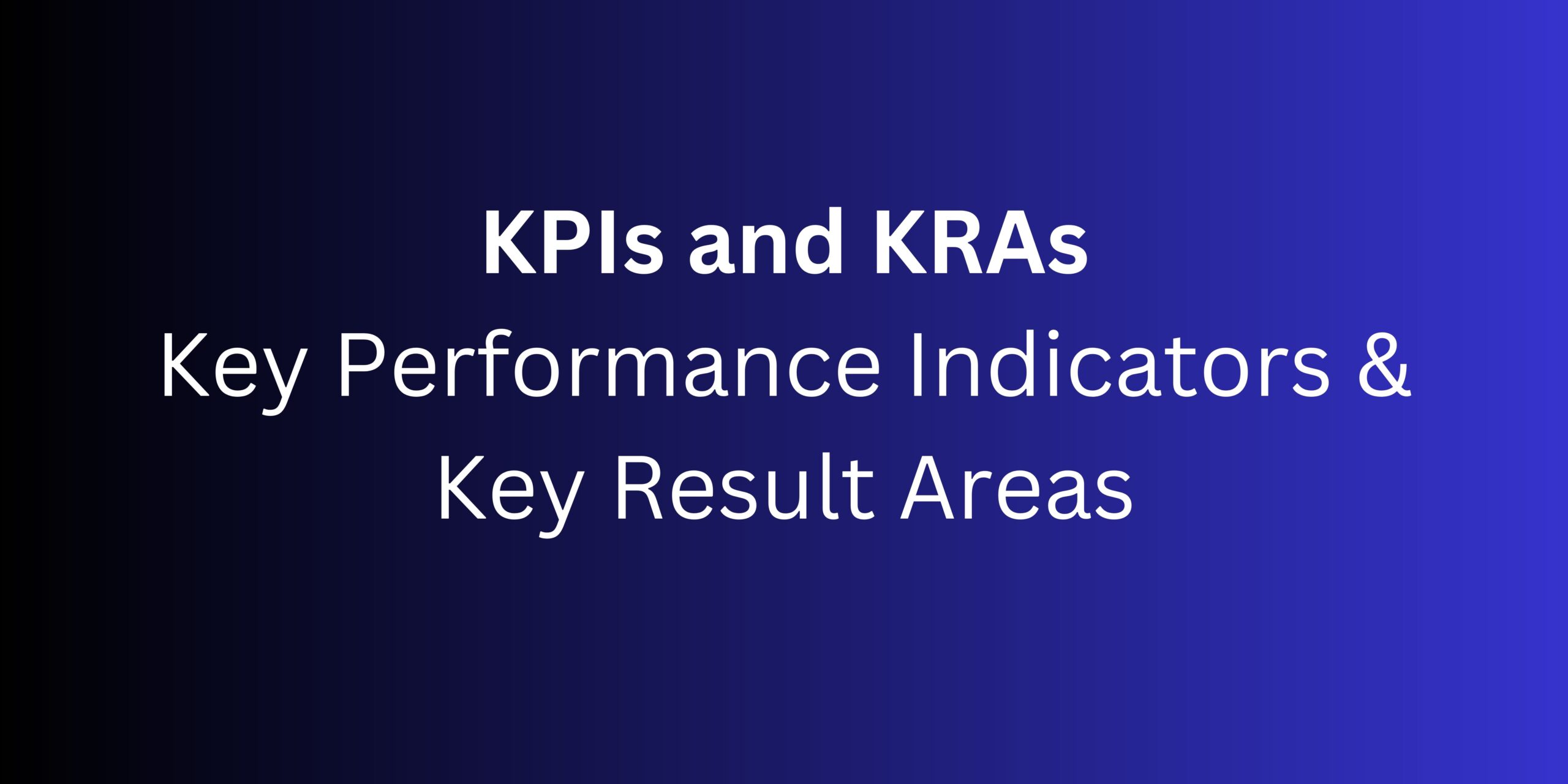In a competitive business landscape, organizations must set clear goals and objectives to achieve success. Key Performance Indicators (KPIs) and Key Result Areas (KRAs) play a crucial role in measuring and tracking progress toward these goals. In this article, we will explore the concept of KPIs and KRAs, their differences, and their importance in driving performance and success.
What are KPIs?
Key Performance Indicators (KPIs) are measurable metrics used to evaluate the progress of an organization, team, or individual towards achieving its strategic objectives. KPIs are typically derived from the organization’s goals and reflect its critical success factors. They provide quantifiable and objective measures of performance and serve as a basis for decision-making and performance management. One of the key attribute of a KPI is that it should be non financial metric.
Defining KRAs:
Key Result Areas (KRAs) are specific areas of responsibility that an individual or team is accountable for, to achieve desired outcomes. KRAs are derived from an individual’s or team’s job description or organizational objectives. Unlike KPIs, which focus on performance measures, KRAs define the key areas where results need to be achieved.
The Relationship between KPIs and KRAs:
While KPIs and KRAs are related, they serve different purposes within an organization. KPIs provide a set of performance metrics that track progress towards strategic goals, while KRAs define the key areas where results are expected. KPIs often support the measurement of KRAs, as they provide measurable indicators of success within each KRA.
KPI = Objective + Measurement + Initiative
Characteristics of Effective KPIs and KRAs:
Relevant: KPIs and KRAs should align with the organization’s strategic objectives and be directly tied to desired outcomes.
Measurable: KPIs and KRAs should be quantifiable and provide objective measures of performance.
Attainable: KPIs and KRAs should be achievable and realistic, considering available resources and capabilities.
Time-bound: KPIs and KRAs should have specific time frames for achievement, allowing for regular tracking and evaluation.
Examples of KPIs and KRAs:
KPIs can vary across industries and organizations, but some common examples include:
- Sales revenue
- Customer satisfaction scores
- Employee productivity
- Website traffic
KRAs are job or department-specific and may include:
- Sales target achievement
- Project delivery timelines
- Customer retention rates
- Quality control metrics
Benefits of using KPIs and KRAs:
Implementing effective KPIs and KRAs offers several benefits to organizations, including:
Clear performance tracking: KPIs and KRAs provide a structured approach to monitor progress towards strategic goals.
Accountability and alignment: By defining individual or team responsibilities, KPIs and KRAs enhance accountability and align efforts with organizational objectives.
Data-driven decision-making: KPIs and KRAs provide actionable data for informed decision-making, enabling organizations to make timely adjustments and improvements.
KPIs and KRAs are powerful tools for measuring performance and achieving organizational goals. By implementing relevant and measurable metrics, organizations can track progress, enhance accountability, and drive success. It is crucial to regularly review and update KPIs and KRAs to ensure their alignment with evolving business priorities. By leveraging the power of KPIs and KRAs, organizations can pave the way for continuous improvement and sustained growth.

(This article is written by Ajith Kumar.C, Audit Executive at R V K S And Associates)
